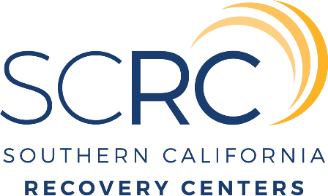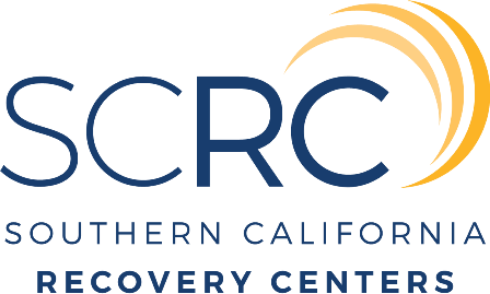If you’re concerned that someone in your life may be experiencing substance use disorder and a co-occurring disorder, it’s important to know what you’re looking for. From intense mood swings and social withdrawal to an unhealthy dependency on substances, these symptoms form a complex pattern that may signify a dual diagnosis. This article breaks down these signs in clear terms, equipping you with knowledge to recognize and seek help for co-occurring disorders in men.
Keep in mind:
- Co-occurring disorders (dual diagnosis) affect a significant number of men, often involving substance abuse coupled with mental health conditions like depression, bipolar disorder, anxiety, and PTSD, which can complicate treatment and recovery.
- Symptoms of co-occurring disorders in men encompass a range of behavioral, emotional, and physical indicators, such as withdrawal from social activities, mood swings, insomnia, and extreme fatigue, which are imperative for diagnosis and effective treatment.
- Comprehensive treatment approaches for men with co-occurring disorders include integrated treatment, individual therapy, and support groups, aiming to address both mental health and substance abuse issues to improve recovery outcomes.
Understanding Co-Occurring Disorders in Men

The simultaneous occurrence of mental illness and substance abuse is recognized as a dual diagnosis, an extensive public health concern. Nearly half of the American population (45%) faces this challenge, with over 9.5 million adults in the United States diagnosed with co-occurring disorders. Notably, among those receiving treatment for these conditions, men represent 56% and often suffer from various specific mental health issues such as:
- antisocial personality disorder
- bipolar disorder
- depression
- anxiety disorders
- schizophrenia
These are more frequently observed among them and introduce distinctive challenges along with increased risk factors.
Dual diagnosis adds complexity to recovery due to interrelated elements that can intensify both mental health conditions and substance use disorders alike leading to greater adversity for individuals affected by it. In the U.S., out of approximately 21 million people living with a substance use problem, almost 8 million also experience a concurrent mental illness—a statistic highlighting the intricate nature of co-occurring ailments which calls for comprehensive integrated approaches in dual diagnosis treatment strategies.
Mental Health Disorders Commonly Linked to Addiction in Men
Certain mental disorders are more frequently associated with substance use issues in males. Men who suffer from a mental health condition such as depression are 1.3 times more likely to struggle with drug addiction, and those battling bipolar disorder — characterized by extreme manic or depressive episodes — have an elevated risk of engaging in substance use. Generalized anxiety disorder, the most prevalent mental health disorder in America, increases the odds for alcohol and drug abuse. Recognizing how these mental health conditions intersect with substance use disorders is key to devising effective treatment and prevention plans.
Men diagnosed with post-traumatic stress disorder (PTSD) – which can be triggered by numerous traumatic events including military combat – may resort to self-medicating through substances to cope with symptoms like excessive alertness and concentration difficulties that stem from their trauma experiences. The link between Attention Deficit Hyperactivity Disorder (ADHD) in men and addiction is notable too. There’s a tendency among them to misuse prescribed stimulants intended for ADHD management.
Though not as often identified amongst men, co-occurrence of schizophrenia or eating disorders alongside substance use ailments presents additional challenges due to the blend of both psychological distresses along with physical symptomatology they bring forth.
Substance Abuse Patterns in Men
Patterns of substance abuse, which include the misuse of drugs among men, often lead to behaviors that endanger their well-being and aggravate existing mental health conditions. Men frequently abused substances are:
- Alcohol is the substance most commonly misused by men
- Binge drinking is a dangerous practice more prevalent in males
- Other various substances that heighten the risk for emergencies or overdoses
Such behavior concerning substance abuse can profoundly affect a man’s mental health and general welfare.
Beyond alcohol consumption, there exists a higher prevalence among men in terms of tobacco usage, prescription medication abuse, and dependence on illicit narcotics like marijuana as well as stimulants including cocaine and methamphetamines. Physiological variations contribute to different experiences with these substances. For instance, men Experience heightened euphoric effects from cannabis use and metabolize alcohol differently than women do—often getting intoxicated in lesser quantities.
Recognizing Symptoms of Co-Occurring Disorders in Men

Identifying signs of co-occurring disorders in men is essential for appropriate diagnosis and treatment. Symptoms can manifest across behavioral, emotional, and physical spectrums and may differ based on the intensity of the mental health conditions present.
There exists a correlation between the severity of an individual’s mental illness and their propensity towards substance use. This suggests that there is a more frequent occurrence of substance abuse among individuals suffering from severe mental health issues.
Behavioral Symptoms
Behavioral indicators are crucial for identifying co-occurring disorders in men. Notably, a man may show signs of these conditions by withdrawing from social connections, including family and friends, or losing interest in previously valued activities. The emergence of aggressive behaviors such as fighting, non-compliance with treatment plans and fraternizing with drug users could point to co-occurring disorders.
Erratic actions and sudden surges of energy can be symptomatic behaviors indicating impulsivity linked to co-occurring disorders among men. Specifically concerning marijuana use disorders in this demographic group is their propensity for higher instances of other substance abuse issues along with antisocial personality disorder – representing significant behavioral red flags that should not be overlooked when assessing for occurring disorders.
Emotional Symptoms

Psychological symptoms are critical in the identification of co-occurring disorders among males. Such symptoms may be intensified by societal expectations tied to masculinity, leading to increased embarrassment about seeking assistance for mental health issues. In men with co-occurring disorders, the following emotional indicators might be observed:
- Severe mood fluctuations
- High levels of irritability
- A lack of patience
- Sustained bouts of deep sorrow
- Illusions of being indestructible
- Numbness to emotions
These manifestations are indicative of men grappling with co-occurring disorders.
Though less frequently reported by males compared to females, anxiety can represent a profound psychological symptom within those enduring substance use disorders. More alarming signs such as self-loathing and thoughts centered on suicide may reflect an acute level of psychological turmoil in males suffering from concomitant conditions. At times, these intense emotional experiences may also take shape as strong desires for drugs or alcohol coupled with the conviction that they necessitate such substances for basic functionality—potentially precipitating withdrawal effects upon cessation.
Physical Symptoms

Men presenting with co-occurring disorders can exhibit a range of physical symptoms that are quite revealing. Among these symptoms, one may observe:
- Disturbances in sleeping patterns, manifesting as either excessive sleep or difficulty maintaining sleep
- Noticeable fluctuations in weight accompanied by nutritional deficiencies
- A marked increase in fatigue levels
- Neglect of personal grooming and hygiene standards
These signs could point to the existence of co-occurring disorders in males.
Men dealing with co-occurring conditions might demonstrate additional indicators such as:
- Irregularities within their energy states, potentially stemming from substance use issues or underlying mental health problems
- Digestive system disturbances including instances of nausea and constipation which often correlate with cases involving substance abuse
- Compromised immune defenses leading to an amplified risk for infections and various diseases
- Neurological manifestations like shakiness or lackadaisical motor skills which could be associated with either mental health challenges or consumption habits related to substances
The manifestation and intensity of these signs among men living with co-occurring disorders may differ based on specific individual factors.
Dual Diagnosis Quiz: Do I Need Treatment for Dual Diagnosis?
Below is a quiz that can help you determine whether to reach out for a professional diagnosis. The self-test below should not replace an official assessment. If you think you might be suffering from dual-diagnosis, reach out to us today to speak to our admissions team.
The Importance of Early Detection and Intervention
Understanding the critical role of early identification and intervention is key for achieving success in the recovery from co-occurring disorders. These conditions tend to exacerbate the difficulties associated with recovery. Unless both substance use issues and mental health concerns are addressed simultaneously, attaining a full recovery might be elusive. Individuals suffering from co-occurring disorders who undergo an integrated treatment regimen often experience superior results, showcasing improved retention rates in programs alongside decreased levels of substance use and psychiatric symptoms.
The complexity brought about by severe co-occurring conditions necessitates a comprehensive approach to treatment—highlighting why integrated methods become vital when these challenges are detected promptly. Embracing strategies that prioritize early detection coupled with integrated care greatly contributes towards proactive management of such cases, significantly improving chances for positive outcomes among individuals dealing with co-occurring disorders.
Treatment Approaches for Men with Co-Occurring Disorders
Integrated treatment plans tailored for men contending with co-occurring disorders encompass a variety of strategies, including personalized therapy and support groups. This multidimensional care framework aims to tackle the distinct hurdles associated with co-occurring conditions in males, enhancing the prospects for successful recovery when these approaches are synergistically applied.
Integrated Treatment

An integrated treatment strategy is considered the most effective for managing co-occurring disorders, as it simultaneously targets mental health issues and substance use. This holistic method takes into account the complexities and interplay between co-occurring conditions to improve overall treatment outcomes. By treating each condition with equal priority, interventions are applied in parallel rather than sequentially.
In deploying an integrated treatment plan, a multidisciplinary team that typically includes social workers, psychotherapists, and case managers work collaboratively to deliver all-encompassing care. The convergence of multiple therapeutic modalities—such as psychotherapy, pharmacotherapy, and behavioral therapy—helps amplify symptom relief. Custom-tailored therapies within this framework often involve methods like motivational interviewing along with cognitive-behavioral therapy and contingency management techniques specifically aimed at effectively tackling the challenges posed by co-occurring disorders.
Individualized Therapy
Tailored therapy plays a pivotal role in the treatment of men with co-occurring mental health and substance use disorders. This form of therapy is characterized by:
- Custom-designed treatment strategies that address each man’s specific struggles and requirements
- A private setting conducive to open discussions about personal challenges
- The development and refinement of individualized therapeutic plans
Such personalized therapeutic interventions are key for fostering mindfulness, allowing individuals to stay present-focused and adeptly handle precipitating factors as they emerge—an essential skill set for maintaining long-term recovery. Gaining insight into one’s own particular triggers during these sessions is crucial, as it paves the way for crafting effective relapse prevention tactics.
Enhancing interpersonal communication skills forms an integral part of this individualized approach to therapy. It proves particularly beneficial for those whose social interactions have been adversely impacted by their concurrent addiction issues and mental health conditions.
Support Groups and Peer Connection
Peer support groups, including 12-Step programs such as Alcoholics Anonymous and Narcotics Anonymous, serve as a crucial resource for men grappling with co-occurring disorders. These forums offer emotional support, the camaraderie of shared struggles, and social networking that are essential in curtailing substance use behaviors. They significantly contribute to better engagement in therapeutic processes, lowering risky behavior prevalence while enhancing both self-efficacy and abstinence rates.
Incorporating peer support into official treatment regimens for men facing repeated challenges from substance use disorders represents an economical strategy that bolsters compliance. Such peer involvement is not limited to short-term care. It plays an instrumental role in sustaining long-term recovery efforts by minimizing relapse occurrences. It fosters continued sobriety within sober living environments and maintains ongoing encouragement through participation in mutual help groups.
Overcoming Barriers to Treatment for Men
Addressing the key challenges associated with treatment for men is crucial in overcoming obstacles. The stigma tied to addiction may prevent men from pursuing help, as they fear losing social connections, facing judgment, and experiencing a sense of shame within their family circle. Socioeconomic factors also create hurdles. These include greater levels of unemployment among men with co-occurring disorders and steep rehabilitation costs that hinder access to comprehensive treatment programs.
There’s an acute lack of programs designed specifically for individuals grappling with co-occurring conditions. This challenge is compounded by a limited number of professionals specializing in mental health and substance abuse services. To combat these issues effectively and ensure better outcomes for substance abuse treatments among men, initiatives such as incorporating telehealth services to expand reach especially in remote areas are being implemented through legislative measures like the Affordable Care Act. The reinforcement provided by free support groups alongside efforts made by the Mental Health Services Administration is equally critical in augmenting treatment accessibility for those dealing with both mental health concerns and substance misuse.
It’s critical to acknowledge and address co-occurring disorders in men by identifying symptoms early on and implementing the right treatment strategies for successful recovery. Men facing these concurrent disorders must contend with a range of challenges that span behavioral, emotional, physical aspects as well as societal and economic obstacles. An integrated treatment approach encompassing tailored therapy combined with peer support can effectively tackle these difficulties. This highlights the ongoing need for progress in both diagnosing and treating co-occurring disorders within this demographic.
If you or someone you love is suffering from the signs and symptoms above, reach out to our team to get a free assessment and learn more about how we can help.
Southern California Recovery Centers
Southern California’s Premier Outpatient Addiction Recovery Center
Frequently Asked Questions
Manifestations of co-occurring disorders often involve the use of alcohol or different substances as a means to manage emotional struggles, alterations in personality, pulling away from social engagements, unpredictable conduct, and episodes of heightened energy.
Professional assistance is crucial for individuals demonstrating these symptoms. If you or someone close is showing signs of co-occurring disorders, reaching out for expert help is essential.
Males might exhibit indicators of mental illness via symptoms like irritability, shifts in emotions, challenges with sleep, and heightened use of substances.
Noticing any significant alterations in demeanor or emotional state is crucial.
The most common dual diagnosis includes bipolar disorder, anxiety, depression, schizophrenia, and behavioral disorders. These often coincide with substance use disorder.
Dealing with such challenges is complex and can be difficult, but seeking professional help is crucial.
In males, the presence of co-occurring disorders may manifest through a range of behavioral, emotional, and physical indications. This includes pulling away from social interactions, experiencing fluctuations in mood, having trouble with sleep patterns, as well as encountering neurological problems.
Recognizing these symptoms is crucial. Hence professional assistance should be sought if such signs are observed to address co-occurring issues effectively.
Individuals with co-occurring disorders, particularly men, receive specialized care that encompasses integrated treatment as well as tailored therapy and support groups. This holistic approach is crucial to effectively address the intertwined challenges of mental health issues and substance abuse.



